Tiny Paws Today, Couch Conquerors Tomorrow
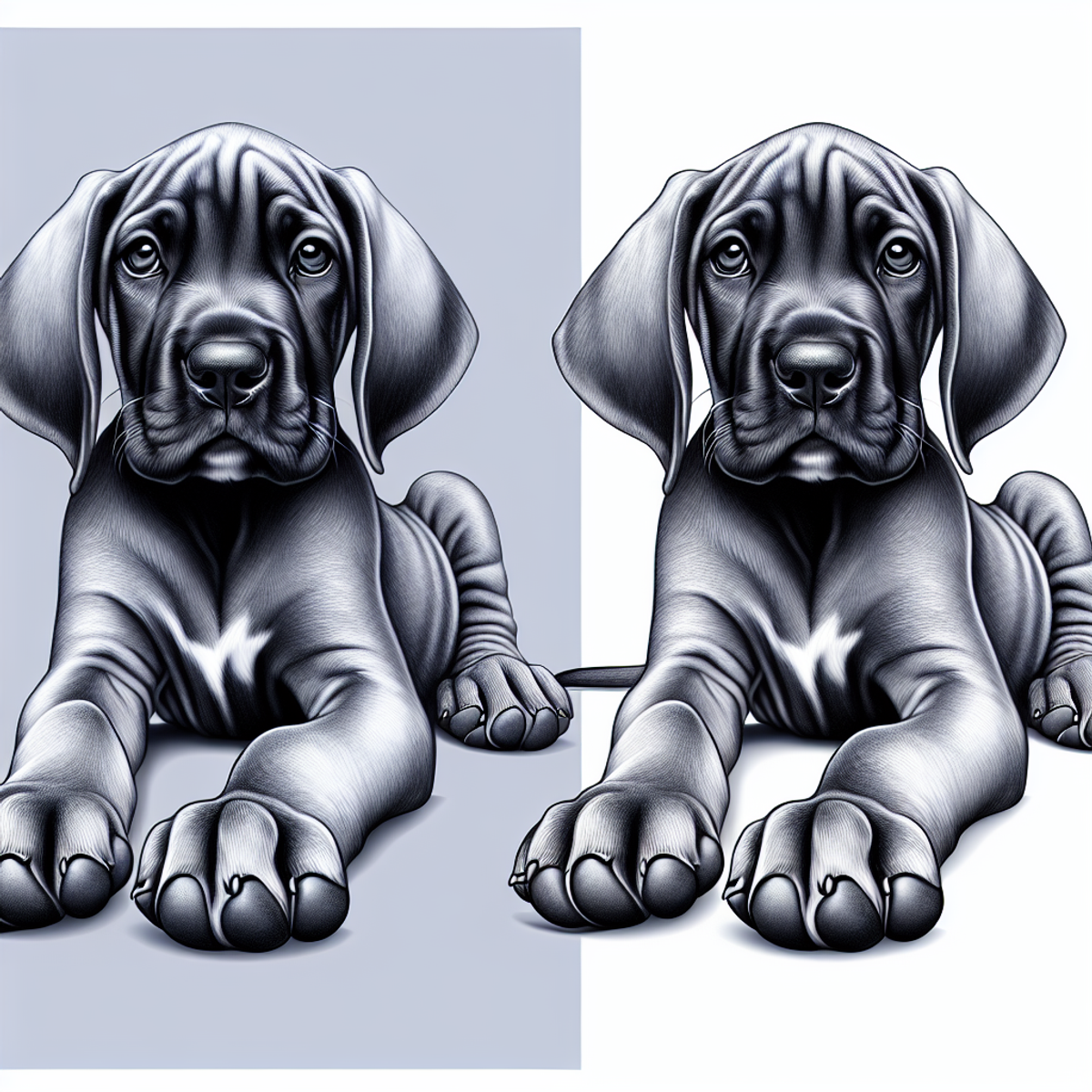
First off, let me just say that being this big AND this adorable is quite the responsibility. One minute I’m elegantly prancing around like a majestic horse, and the next minute I’m tripping over my own massive paws. Trust me, coordination takes practice when your feet are the size of dinner plates!
Now, about my eating habits – WOW, do I love food! But here’s the thing: my humans have to be super careful about what they feed me. Apparently, I can’t just eat whatever I want (even though that bag of regular dog food looks perfectly delicious). I need special large-breed puppy food because my body is basically trying to build a skyscraper in record time. My humans are always counting my calories like I’m some furry athlete. Hey, growing from cute to colossal takes serious fuel!
Speaking of my size, let me tell you about vet visits. These are NOT my favorite adventures. The vet is always poking and prodding, checking for something called “hip dysplasia,” which sounds scary but basically means making sure my hips work correctly as I grow into my giant self. They also worry about something called “bloat,” which is why I have to eat smaller meals throughout the day instead of inhaling everything at once. Trust me, I’d prefer the inhaling method!
The best part about being a Great Dane puppy? Training and meeting new people! I’m basically a love bug on stilts. My humans work really hard to teach me manners because, let’s face it, when you’re going to be 150 pounds, “sit” and “stay” aren’t just suggestions – they’re survival skills for everyone around me!
Living in a loving home is the absolute best. Sure, I might accidentally knock over a lamp or two (or seven), but my family knows I mean well. After all, when you’re this loyal and friendly, a few broken decorations are totally worth it, right?
Physical Characteristics of Great Dane Puppies
First off, we come in some pretty awesome colors. I’m fawn colored, which means I look like a golden cookie. My buddy Rex is brindle – he’s got stripes like a tiger, but way friendlier! Then there’s Luna, who’s blue (though between you and me, she looks more gray), and Thor, who’s black as midnight. We’re like a rainbow of giant puppies!
Our fur is pretty neat, too. It’s short and thick, which is great because our humans don’t have to spend forever brushing us. Trust me, when you’re this big, bath time is already an adventure – nobody wants grooming to take all day, too!
Now, about our ears – this is where things get interesting. Some of us have cropped ears that stand up tall and pointy, making us look super fancy and vital. Others have natural ears that flop down and are perfect for dramatic head shakes when we’re playing. Both types are great for selective hearing when our humans call us to come inside!
But the best part about us, Great Dane puppies? Our eyes are irresistible. We’ve perfected the puppy dog look that can get us extra treats, belly rubs, and forgiveness for eating your favorite shoes.
Plus, we’re built like furry athletes – strong and graceful, even when we’re tripping over our own giant paws! Did you know that Great Danes require ample space to stretch and move comfortably, which helps in our growth and development?
We’re pretty spectacular, if I do say so myself!
Temperament and Behavior Traits
I love making friends with everyone I meet, from tiny humans to grown-ups. My tail wags so hard when I see you that sometimes I knock things over. Oops! But hey, that’s just how I show I’m excited to see you.
I’m super playful too. Want to play fetch? I’m in! Want to wrestle on the floor? Let’s do it! Just remember, I might forget how big I am and accidentally sit on you. It’s not personal – I think I’m a lap dog sometimes.
Here’s what makes us Great Danes special:
| What I’m Like | What This Means for You |
|---|---|
| Friendly Giant | I’ll greet everyone like they’re my best friend |
| Playful Pup | I turn everything into a game (even your shoes) |
| Loyal Bodyguard | I’ll follow you everywhere, even to the bathroom |
| Protective Pal | I’ll bark at suspicious things like the mailman |
Speaking of being protective, I take my job as family guardian very seriously. That squirrel in the yard? I’m watching it. The doorbell? I’ll let everyone know someone’s here with my impressive bark. Don’t worry, though – once I know someone’s cool, they’re part of my pack.
And about that loyalty thing – once you’re my human, you’re stuck with me forever. I’ll be your shadow, your couch buddy, and your biggest fan. Just make sure you have a really big couch! Also, my gentle giant personality means that despite my size, I’m a sweet and loving companion.
Size, Growth, and Nutritional Needs
When I was little (and by little, I mean the size of your average full-grown dog), I grew SO fast that my humans couldn’t keep up. One day I could fit under the coffee table, and the next day I was bonking my head on it. My poor family had to keep buying me bigger beds, bigger toys, and definitely bigger food bowls!
Speaking of food – wow, do we Great Dane puppies eat! I’m talking about mountains of kibble here, folks. My humans quickly learned that I needed special puppy food made just for giant breeds like me. Regular puppy food made me grow too fast, which sounds awesome but isn’t great for my joints and bones. Who knew being a gentle giant required such fancy dining?
The funniest part about growing this fast is that my brain thinks I’m still tiny. I’ll try to sit in my human’s lap like I did when I was eight weeks old, except now I’m 80 pounds and growing! They laugh and let me think I’m still a lapdog.
The best part? I still have plenty more growing to do, so this crazy adventure is far from over! And just remember, keeping an eye on my weekly weight checks is essential to make sure I’m growing healthy and strong!
Growth Development Stages
You might think we’re impressive now, but boy, do we’ve some crazy growth spurts to get through first. During our first year, we basically turn into furry rockets shooting up toward the ceiling. I’m not kidding – one day I could fit under the coffee table, and the next day I’m bonking my head on it!
When we’re tiny puppies from birth to eight weeks, we’re pretty much just learning how to walk without falling over our own giant paws. We figure out how to play with our brothers and sisters without accidentally sitting on them. Trust me, that’s harder than it sounds when you’re growing this fast.
By the time we hit four months old – WHAM! – We hit our biggest growth spurt. One minute, our humans are buying us a medium collar, and the next week, it looks like a bracelet. During this crazy time, we need lots of exercise to keep our muscles strong, especially since we can gain about 5-10 pounds weekly during this period. Otherwise, we end up looking like noodles with legs.
As we get closer to being full-grown (which takes forever, by the way), our humans watch us like hawks. They’re always worried about our joints and making sure we stay healthy. Can you blame them?
We go from lap dogs to horse-sized in what feels like five minutes!
Growing up Great Dane-style is definitely an adventure for everyone involved.
Nutritional Requirements Overview
When it comes to feeding this big body of mine, let me tell you – size definitely matters! As a Great Dane puppy, I grew faster than a weed in summer rain. One day I was tiny enough to fit in a lap, and the next day I was knocking over coffee tables with my wagging tail!
My humans quickly learned that my growing body needed special fuel. I can’t just eat any old dog food – I need the good stuff made just for us giant breeds. Think of it like putting premium gas in a fancy sports car, except I’m more like a friendly monster truck with floppy ears.
The best part about being a Great Dane? I get to eat LOTS of protein and healthy fats. My humans make sure I get all the right vitamins too, but they’re careful not to overfeed me. Too much food too fast can hurt my joints.
Sometimes my humans give me special treats with fancy names like omega fatty acids and glucosamine. I don’t know what those words mean, but they taste pretty good mixed in my kibble. Plus, they help keep my coat shiny and my joints happy for all that running around I love to do.
The secret to raising a healthy giant like me? Start with good food from day one, and I’ll grow up strong enough to be the perfect gentle giant! Monitoring caloric requirements is essential to ensure I grow steadily and avoid any health issues.
Health Issues and Longevity Considerations
First things first – I’m basically a gentle giant who thinks I’m a lap dog. Yes, I’ll try to sit on you, and no, your couch will never be the same. But let’s talk about the not-so-fun stuff that comes with being magnificently huge like me.
My heart is as big as my personality, but sometimes it doesn’t work perfectly. Heart problems are pretty common in my family tree, especially dilated cardiomyopathy (DCM), which can affect my overall health. My stomach can also do this weird twisty thing called bloat – it’s scary and dangerous, so you’ll need to learn about that.
And these long legs of mine? Sometimes my joints get cranky, especially when I’m older.
Here’s the tough part – we Great Danes don’t live as long as those tiny yappy dogs. Most of us stick around for about 8-10 years. I know, I know, it’s not fair! But think of it this way: I’ll give you a decade of pure joy, drool, and the best hugs ever.
The good news is you can help me stay healthy! Feed me the right food, don’t let me exercise like crazy right after eating, and take me to the vet regularly.
With your help, I can live my best giant life – knocking things over with my tail, stealing your bed, and being the goofiest, most lovable dog you’ll ever meet!
Common Health Concerns
Common Health Concerns
Woof! Let me tell you what my humans need to watch out for to keep me healthy and happy. Being a Great Dane is awesome, but we big dogs have some special health stuff to think about.
First up is something called hip dysplasia. It’s a fancy word that means my hip joints mightn’t work perfectly. Think of it like a door hinge that gets a little wobbly – not fun when you’re trying to run around the yard!
Then there’s this scary thing called bloat. It sounds like what happens after I overeat, but it’s way more serious. My stomach can twist around inside me, which is super dangerous. My humans learned to feed me smaller meals and make sure I don’t gulp down my food like I’m in a race.
Heart problems are another biggie for us Great Danes. My ticker is pretty huge (just like the rest of me!), and sometimes it doesn’t pump blood the way it should. It’s called dilated cardiomyopathy, which is basically a heart muscle that’s stretched out.
There’s also something called osteosarcoma – that’s bone cancer. I know, scary stuff! But the good news is that my humans take me to the vet regularly so we can catch any problems early. Regular veterinary check-ups are essential for early detection of issues like hip dysplasia and other health concerns.
The best thing my family does is schedule regular check-ups with our vet. It’s like going to the doctor for humans, except I get treats and belly rubs!
Lifespan Expectations
Hey there, humans! Let me tell you about something that’s not so fun to talk about – how long us Great Danes stick around. I know, I know, it’s a bit of a downer, but bear with me!
So here’s the deal: we Great Danes usually live between 8 and 10 years. Yeah, I can see that surprised look on your face! “But you’re so awesome!” you’re thinking. Well, thanks! The thing is, us big dogs just don’t live as long as those tiny ankle-biters. It’s like we’re living life in fast-forward mode.
Don’t believe everything you hear about dog lifespans, though. Some people think all dogs live the same amount of time, but that’s totally wrong! It’s like saying a hamster lives as long as an elephant – doesn’t make much sense, right?
Our health depends on many factors. Sometimes it’s just the genes we got from our parents (thanks, Mom and Dad!). How we’re taken care of as puppies matters too. Regular vet check-ups are essential for monitoring our health and catching any issues early.
But here’s the good news – you can help us live our best doggy lives! Feed us good food, take us for walks (not too crazy though, we’re not marathon runners), and get us those vet check-ups. Trust me, even though I hate getting my temperature taken, it really helps keep me healthy.
The bottom line? We mightn’t be around as long as you’d like, but we’re going to make every single day count! More belly rubs, anyone?
Preventive Health Measures
Staying Healthy: A Great Dane’s Guide to Living Large
First up, let’s talk about those pesky shots. I know, I know – nobody likes needles, especially when you’re big enough that the vet needs a stepladder to reach your shoulder. But getting vaccinated on schedule keeps me from catching nasty diseases that could really put a damper on my tail-wagging lifestyle.
Regular vet visits are like going to see my favorite human who gives me treats (okay, sometimes they also poke and prod me, but the treats make up for it). These check-ups help catch any problems before they become big issues.
And when you’re already big enough to knock over small children accidentally, you don’t need health problems making things worse!
Now, about those supplements – my joints work overtime carrying around all this awesome Great Dane-ness. Joint and heart supplements are like superhero vitamins for us gentle giants. My heart has to pump blood up to my ears, which are practically in another zip code from my paws!
Eating right is super important too. I need food that’s perfect for my size, which means no scarfing down tiny kibble meant for those adorable but tiny Chihuahuas.
Quality food in the right amounts keeps me strong without making me look like a furry blimp.
Exercise keeps me in tip-top shape, though I prefer leisurely walks to marathon runs. After all, why rush when you can stroll majestically and let everyone admire your incredible height?
Regular activity helps me maintain a healthy weight, which is crucial when you’re already carrying around 150+ pounds of pure awesomeness.
Taking care of myself means more years of being everyone’s favorite gentle giant!
Training and Socialization Strategies
Training and Making Friends: A Great Dane’s Guide to Growing Up Big and Happy
Hey there! Let me tell you about the most important stuff us Great Dane puppies need to learn. Training and meeting new friends is super important for becoming awesome grown-up dogs like me!
My humans use something called positive reinforcement, which basically means I get treats and belly rubs when I do good things. Trust me, this is way better than getting in trouble! It makes me want to be good AND helps me love my humans even more. Win-win!
Positive reinforcement is the best! Treats and belly rubs make me eager to learn and love my humans even more!
The best part about being a puppy is meeting everyone and everything. My humans took me to parks, stores, and friends’ houses when I was little. At first, new places were scary (especially when I realized how HUGE I was going to get), but now I’m confident everywhere I go. Other dogs don’t intimidate me anymore, even though some people think I should be the scary one!
My humans started teaching me manners super early. There’s a magic time when puppies learn best, similar to how kids learn languages more easily when they’re young. Good thing they didn’t wait, because now I’m basically a gentle giant instead of a bulldozer!
Training sessions are pretty fun. My humans keep them short because, let’s be honest, I’ve the attention span of a… well, a puppy. But the games and treats make learning awesome.
Thanks to all this training and socializing, I’m now the perfect gentleman dog. I don’t knock over little kids (much), and everyone in the neighborhood loves me!
Adoption and Responsible Breeder Selection
So you’re thinking about adding one of my magnificent cousins to your family? Smart choice! But hold your horses (or should I say keep your Great Danes?) – there are some super important things to sniff out first.
First up, adoption is pawsome! There are lots of us gentle giants looking for forever homes. But whether you adopt or find a breeder, you need to be a detective. Here’s what us dogs want you to check out:
Health Stuff That Matters
Make sure our breeders have done their homework! We need health tests for conditions such as hip problems and heart issues. Trust me, you don’t want a puppy with wobbly hips – that’s no fun for anyone. Ask to see the paperwork that proves Mom and Dad’s dogs are healthy.
Check Out Where We Live
Visit! If a breeder won’t let you see where we live, that’s a red flag bigger than my tail wag. We should have clean spaces, room to play, and lots of love. If something smells fishy (and not in a good way), run!
Socialization is Everything
Good breeders make sure we meet lots of people and experience different sounds and situations when we’re tiny. This helps us become confident, friendly giants instead of scared scaredy-cats. Ask how they help us learn about the world.
Experience Counts
You want someone who knows Great Danes inside and out. We’re special dogs with special needs. A good breeder should talk your ear off about our quirks.
Get it in Writing
Any good breeder will give you a contract and promise to help if health problems pop up later. It’s like a friendship agreement that shows they really care about us.
Final Thoughts
Woof! Let me tell you what it’s really like when you bring one of us Great Dane puppies home. Picture this: you think you’re getting a cute little pup, but surprise! I’m going to grow into a furry skyscraper who thinks I’m still lap-dog sized.
When you welcome me into your family, you’re basically signing up for a four-legged roommate who will steal your couch, eat everything in sight, and somehow convince you that I NEED to sleep in your bed. My “striking presence” is just a fancy way of saying I’ll knock over everything with my enthusiastic tail wagging.
Sure, I’ve got a loving nature, but I also have zero understanding of my own size. I’ll try to be a lapdog even when I weigh more than some motorcycles. I’ll “enrich your home” by leaving drool art on your walls and giving your furniture a new shape.
Here’s the deal, though – if you give me good food, lots of love, and maybe invest in some really strong furniture, I’ll be the best buddy you’ve ever had. Just remember that “responsible ownership” means accepting that I’ll probably eat your homework, your shoes, and possibly your entire grocery budget. But hey, I’ll love you forever and protect your family like the gentle giant I am!
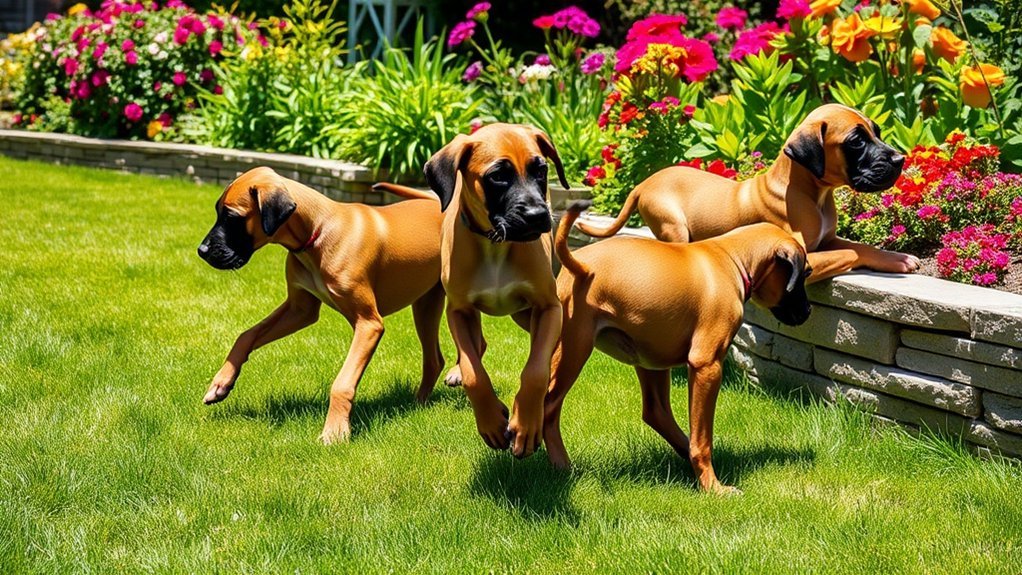
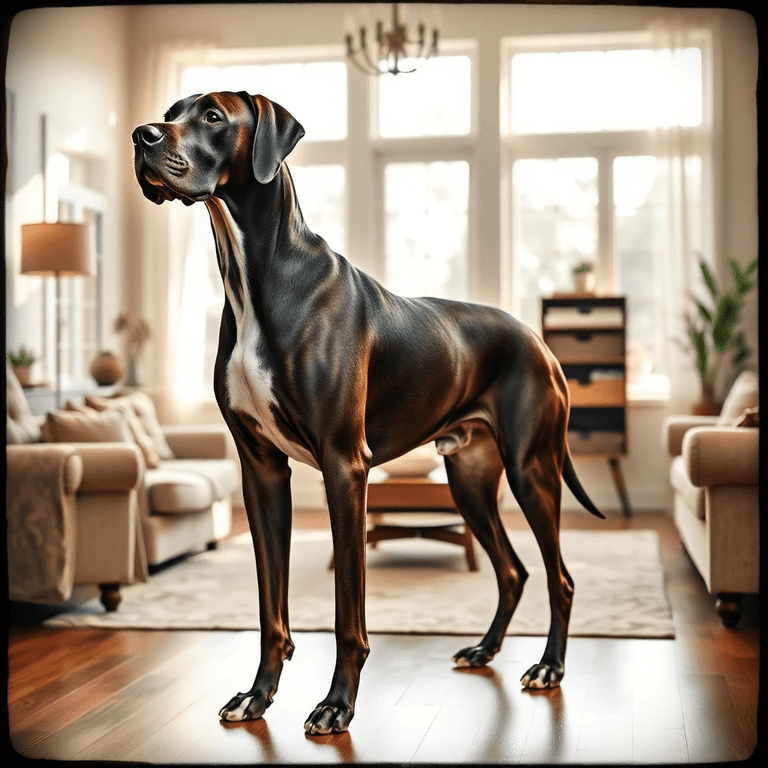
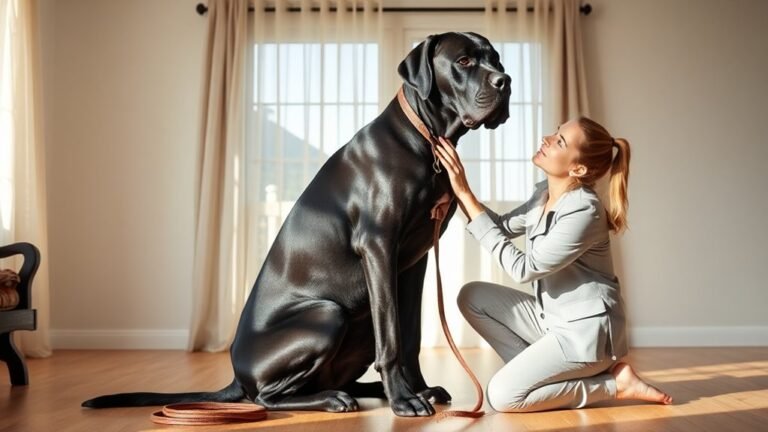
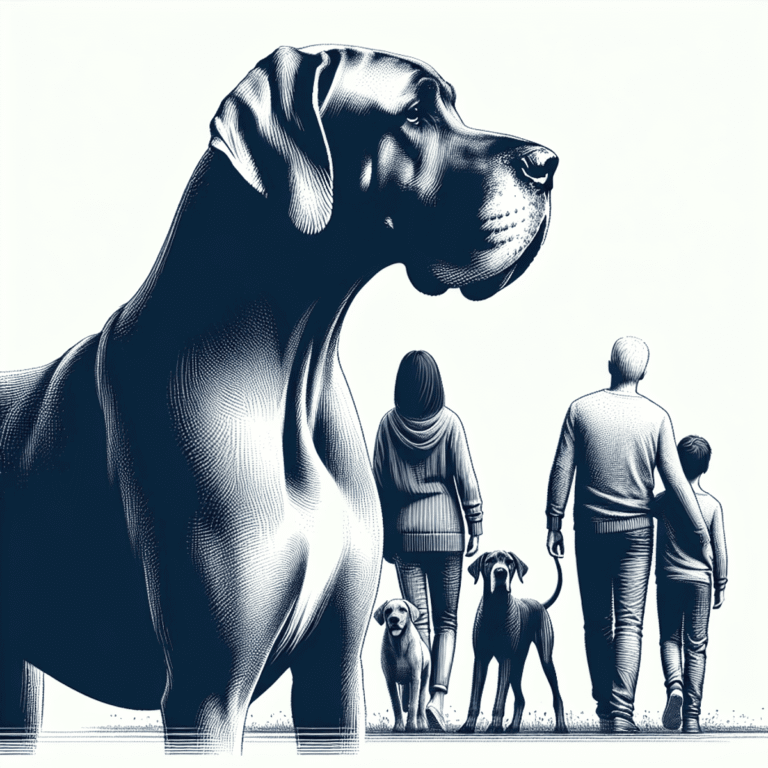
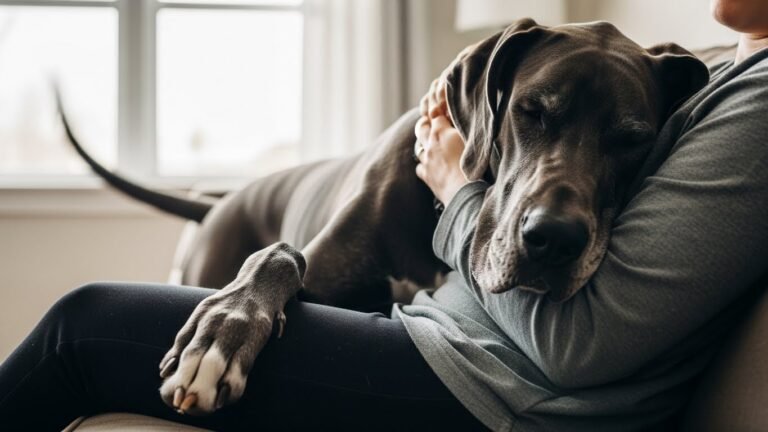
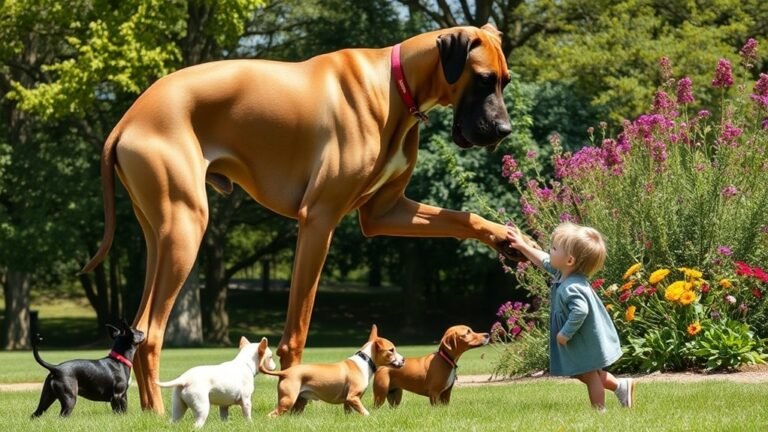
25 Comments